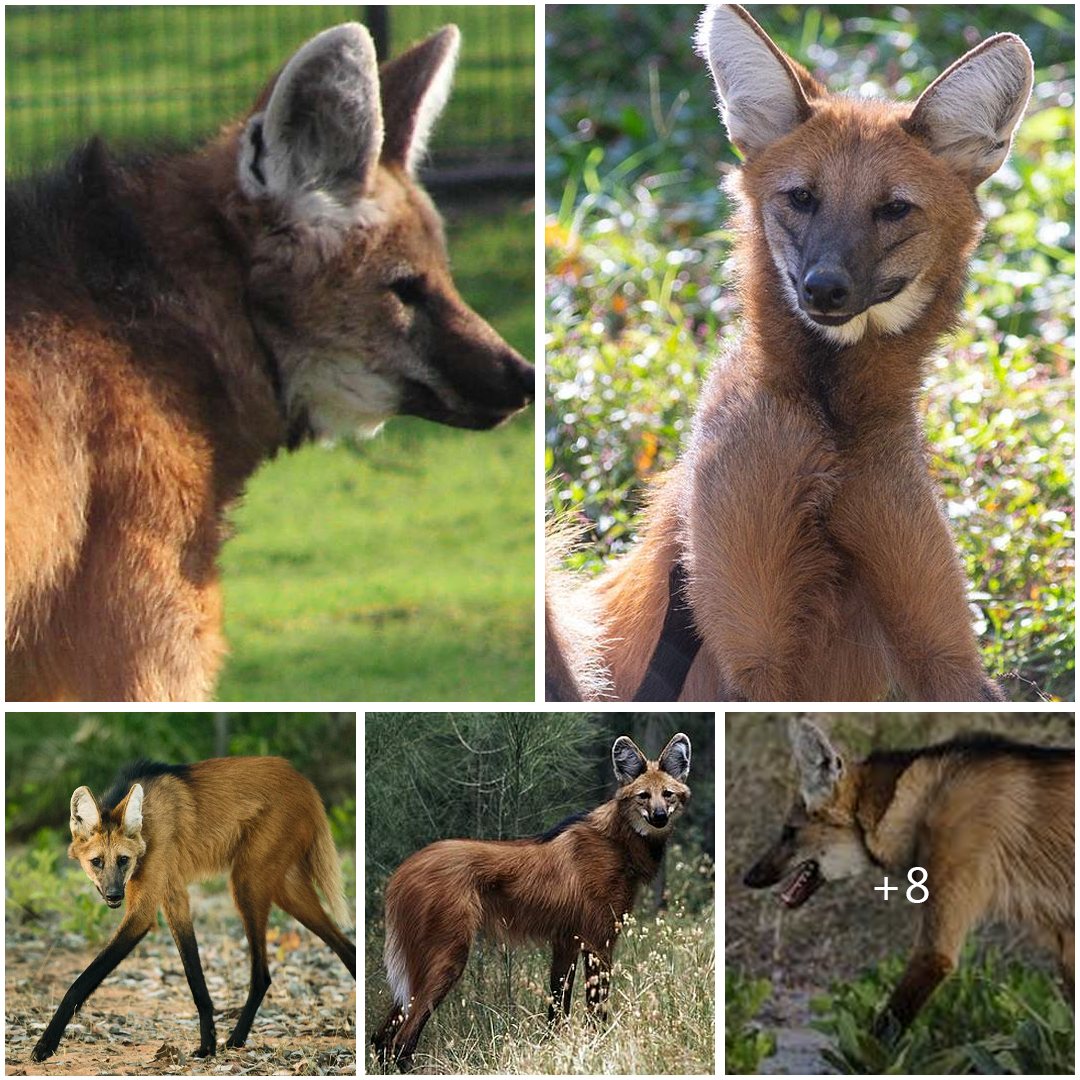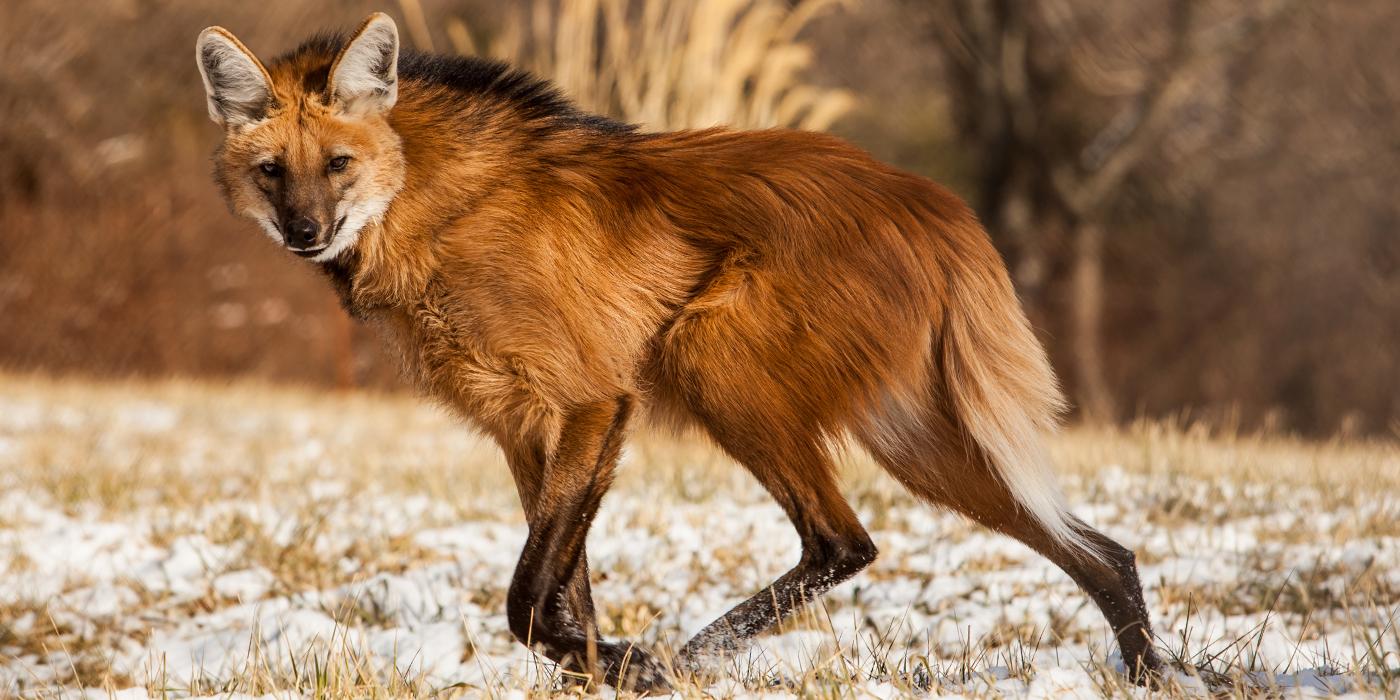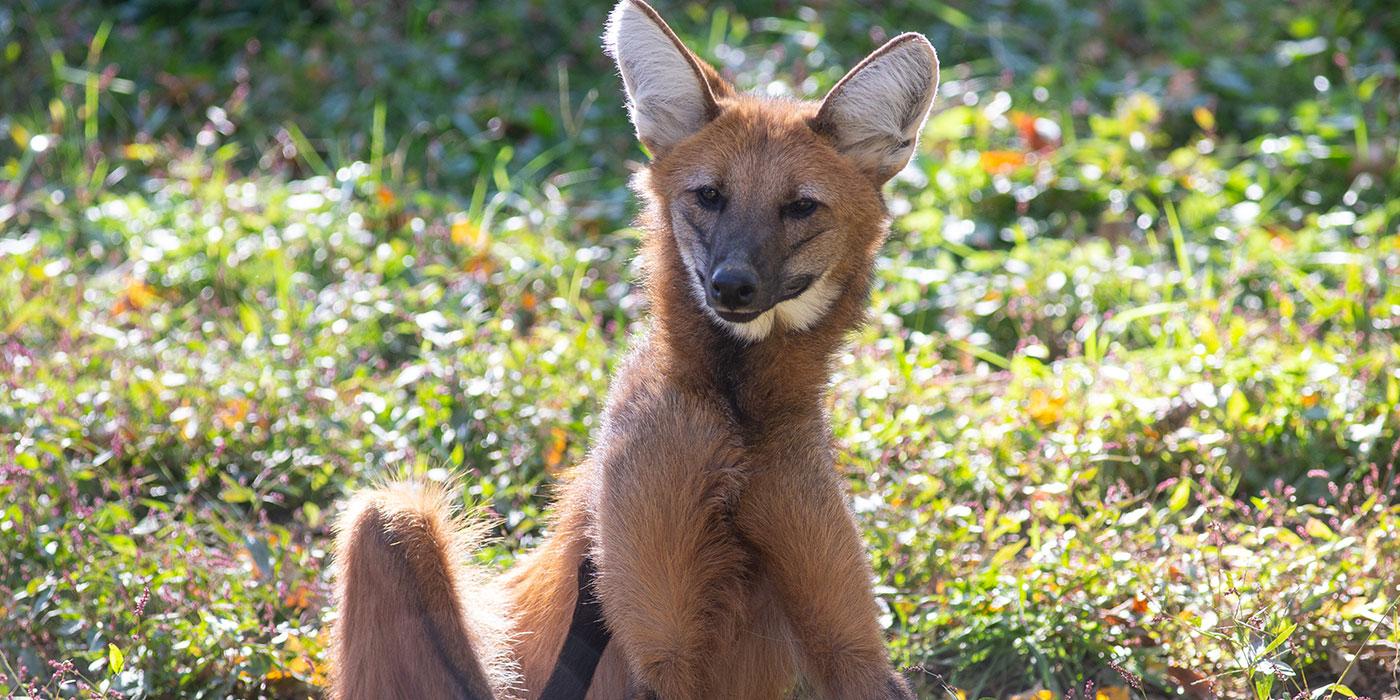
Maned Wolf: Iconic Canid of the South American Grasslands
Introduction: Roaming the expansive grasslands of South America, the maned wolf (Chrysocyon brachyurus) cuts a striking figure with its long legs and distinctive mane. Despite its name, the maned wolf is not closely related to wolves but belongs to its own unique genus. In this exploration, we delve into the fascinating world of the maned wolf, uncovering its habitat preferences, behavior, and the conservation challenges it faces in the wild.

Appearance and Behavior: The maned wolf’s elegant appearance and solitary nature make it a captivating sight in the grasslands of South America. With its reddish-brown fur and black mane, it blends seamlessly into its savanna habitat, utilizing its keen senses of sight and smell to hunt for prey. Despite its carnivorous diet, which includes small mammals, birds, and reptiles, the maned wolf also consumes fruits, vegetables, and other plant matter, making it an omnivorous species.
Habitat and Distribution: The maned wolf is predominantly found in the grasslands and scrub forests of South America, including countries such as Brazil, Argentina, and Paraguay. It favors habitats with open spaces and dense vegetation, where it can hunt for prey and seek refuge from predators. However, habitat loss and fragmentation pose significant threats to its survival, as human activities encroach upon its natural range and disrupt crucial corridors for movement.
Conservation Status and Challenges: The maned wolf is classified as “Near Threatened” by the International Union for Conservation of Nature (IUCN), with populations declining due to habitat loss, roadkill, and human-wildlife conflict. Efforts to conserve this iconic species involve habitat protection, anti-poaching measures, and research initiatives aimed at understanding its ecological needs. Additionally, community-based conservation projects play a crucial role in promoting coexistence between humans and wildlife and mitigating the impacts of human activities on maned wolf populations.
Conclusion: In the grasslands of South America, the maned wolf stands as an iconic symbol of the region’s rich biodiversity and cultural heritage. By recognizing the importance of conserving its habitat and addressing the threats it faces, we can ensure a future where the maned wolf continues to roam free amidst the savannas and scrublands of South America, enriching our lives with its presence and inspiring stewardship of the planet’s natural resources.






